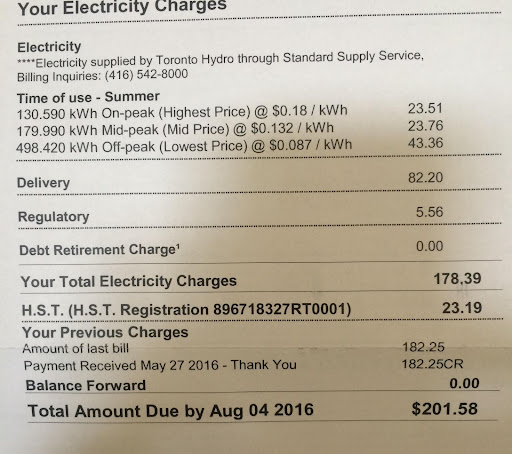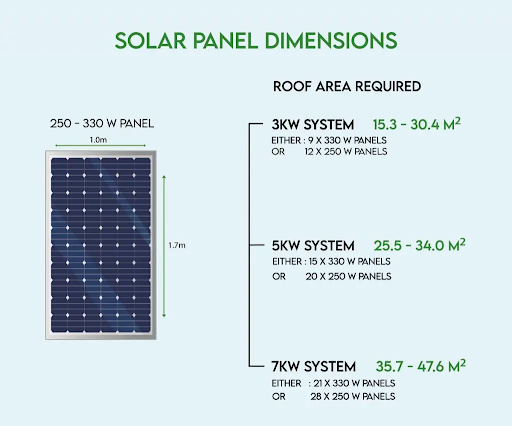Introduction
Installing solar panels can be a significant step towards reducing your carbon footprint and saving money on your electricity bills. However, before you make the transition to solar power, it’s crucial to understand your current electricity bill thoroughly. This understanding will not only help you make an informed decision but also ensure that you get the most out of your solar panel installation. In this comprehensive guide, we’ll break down the components of your electricity bill and how they relate to your potential solar energy system. We’ll also highlight how we Solar Resource, a reputable solar guide company, can assist you in this journey.
Breaking Down Your Electricity Bill
Your electricity bill is typically composed of several components. Understanding each of these components is essential to assess the potential benefits of solar panel installation.
Usage Charges
Usage charges are the most straightforward aspect of your electricity bill. They reflect the cost of the electricity you consume each month, measured in kilowatt-hours (kWh). The rate you pay per kWh may vary depending on your location and utility company.
Delivery Charges
Delivery charges cover the cost of transmitting electricity from power plants to your home. This includes maintaining power lines, transformers, and other infrastructure. These charges are often calculated based on your energy usage or a fixed monthly fee.

Taxes and Fees
Taxes and fees on your electricity bill can vary significantly from one region to another. They may include state or local taxes, regulatory charges, and surcharges for various purposes, such as renewable energy initiatives.
Time-of-Use Pricing (TOU)
Many Canadian provinces employ time-of-use pricing, where electricity rates change throughout the day based on peak, mid-peak, and off-peak hours. Understanding your consumption patterns and how TOU pricing works can help you optimize your energy usage and potential solar savings.
Debt Retirement Charge (DRC)
The Debt Retirement Charge (DRC) is a fee that was introduced in Ontario to retire the debt incurred by the Ontario Electricity Financial Corporation (OEFC) for past electricity investments and initiatives. This debt was primarily associated with the restructuring of the electricity sector in the late 1990s and early 2000s, as well as the construction of new power generation facilities.
The DRC was established to cover the costs of this debt and was applied to all electricity consumers in Ontario, including residential, commercial, and industrial users. It was often listed as a separate line item on electricity bills.

Understanding Your Energy Consumption
Before you invest in solar panels, it’s crucial to have a clear understanding of your energy consumption patterns.
Analyzing Your Usage Patterns
Start by reviewing your past electricity bills. Look for trends in your consumption, such as seasonal variations or spikes during specific times of the day. Understanding your usage patterns will help you determine how much solar capacity you need to meet your energy demands effectively.
Peak vs. Off-Peak Usage
Many utility companies offer different rates for peak and off-peak hours. By identifying when you use the most electricity, you can tailor your solar panel system to generate power efficiently during those times. This can further optimize your savings.
Solar Panel System Sizing
Now that you have a clear understanding of your electricity bill and consumption patterns, it’s time to size your solar panel system appropriately.
Calculating Your Solar Needs
To determine the size of the solar panel system you need, you’ll want to consider factors such as your average monthly energy consumption and the amount of sunlight your location receives. Solar Resource can very much help you estimate your solar requirements accurately.

Optimizing for Energy Savings
Sizing your solar panel system isn’t just about meeting your current energy needs; it’s also about optimizing for future savings. Solar Resource’s extensive guides can help you design a system that maximizes energy production while considering factors like solar panel types, lifespan of solar panels, shading, panel orientation, and efficiency.
Financial Considerations
Before making the switch to solar energy, you must assess the financial aspects.
Return on Investment (ROI)
Calculating the ROI of your solar panel installation is essential. Solar Resource can provide you with a comprehensive analysis that takes into account factors like energy cost inflation, available incentives, and the expected lifespan of your solar panels.
Financing Options
Solar Resource guides aspiring solar adopters to various financing options, including leases, power purchase agreements (PPAs), and loans. These options can help you make the transition to solar energy without a significant upfront investment.

Stay Connected with Solar Resource
When it comes to solar panel installation, proper knowledge and complete information is crucial. Here’s why Solar Resource stands out.
Comprehensive Solar Guidance
Solar Resource offers expert advice related to solar panel installation, including system design, financial analysis, incentives, and high-quality installations, to help clients make informed and sustainable energy choices.
Legitimate Information
Solar Resource is a valuable source for legitimate information about solar technology. When seeking legitimate information about solar technology, it’s essential to rely on reputable sources like Solar Resource to make informed decisions about adopting solar energy solutions.
Conclusion
Understanding your electricity bill is the first step towards making an informed decision about solar panel installation. By analyzing your consumption patterns, sizing your solar system correctly, and considering the financial aspects, you can harness the benefits of solar energy effectively. Solar Resource, with its expertise and customized advice, can be your trusted partner on this green energy journey. Take the next step towards a sustainable and cost-effective future by considering solar panel installation with guidance from Solar Resource..
Explore Solar Resource to get started on your solar energy journey today!
Frequently Asked Questions
Q1: How can I reduce my electricity bill before installing solar panels?
To reduce your electricity bill before installing solar panels, consider energy-efficient appliances, lighting, and practices. Also, explore opportunities for insulation and weatherproofing to improve your home’s energy efficiency.
Q2: Are there any tax incentives for installing solar panels?
Yes, there are often tax incentives and rebates available for solar panel installations. These incentives can vary by location, so it’s essential to check with your local government and utility company to see what is available in your area.
Q3: How long does it take to recover the cost of a solar panel installation?
The time it takes to recoup the cost of a solar panel installation, known as the payback period, can vary depending on factors such as your energy usage, the cost of installation, available incentives, and local electricity rates. On average, many homeowners see a payback period of 5 to 10 years.
Q4. How does the Debt Retirement Charge affect my electricity bill?
The Debt Retirement Charge added an additional cost to your electricity bill. Its impact on your bill depended on your electricity consumption rate class. The DRC was typically calculated based on the number of kilowatt-hours (kWh) of electricity you used during a billing period.
The DRC was gradually being phased out for residential consumers and some small businesses, and it was set to be fully eliminated for all users by a certain date. This phase-out aimed to provide relief to electricity consumers who had been paying off the debt for years.
